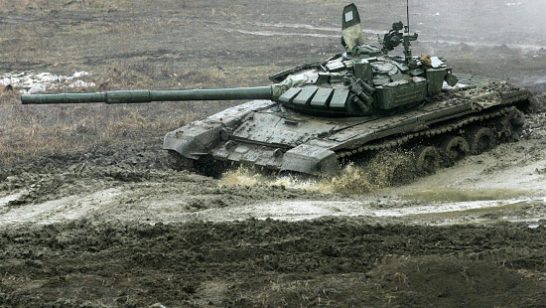
Unconventional weapons, also known as weapons of mass destruction, such as nuclear, chemical and biological weapons, no doubt attract much more attention among the scholarly community and in political circles alike, due to the prestige attached to this category of weapons. Yet, it is a well known fact that tens of millions have lost their lives only because of the use of conventional weapons, and more so with small arms and light weapons, all over the world since the end of World War II.
Hence, due to the geographical location of some countries, the level of conventional armament in their neighborhood may be assigned an equal, if not more, importance as that of unconventional weapons. Turkey may be considered one such country whose security depends on its deterrence capability against not only the weapons of mass destruction that are known to exist in the arsenals of its immediate neighbors, especially in the Middle East and the Caucasus, but also against their conventional weapons capabilities.
Even though much has changed since the collapse of the bipolarity in the international system and the disintegration of the Soviet Union, which ended an immediate conventional threat to Turkey with the emergence of independent states, such as Georgia, Armenia and Azerbaijan that constitute a buffer zone between Turkey and Russia, the heavy conventional military presence of the Russian Army is still given due consideration among Turkish security analysts.
The Conventional Forces in Europe (CFE) Treaty of 1990 that had brought with it a number of significant advantages to Turkey, especially with respect to the stabilization of its northeastern frontier bordering the south Caucasus, has seemingly lost its significance with the decision of Russia to put a halt to the implementation of the treaty since December 2007. Nevertheless, Turkish policy makers and security analysts believe that a “new CFE” or an equivalent comprehensive legal document must be thoroughly negotiated between the concerned parties, namely the NATO allies and Russia in order to feel more secure in the decades ahead.
From Turkey’s perspective, there are a few conditions that the new document must meet for achieving a long lasting peace and stability across the Euro-Atlantic region.
First and foremost among these conditions is that whatever document may be produced out of negotiations that are expected to start in the not too distant future, it must have legally binding character. Otherwise, it may not be paid due respect by one or more of the parties and that may lead to the collapse of the system. In this regard, Turkish security analyst have concerns with the attitude of Russia which apparently sees these matters as soft security issues and tries to mitigate the fears of its neighbors by mere political statements that they expect to serve as security guarantees rather than undertaking binding commitments.
Secondly, Turkish authorities consider the numerical levels/ceilings for the limitation of certain weapons categories, as in the case of the CFE, to be important. Hence, it is thought, careful studies must be conducted taking into consideration the revolution in military affairs, and thus the change in fire power, mobility, and technological upgrades relevant to determining suitable numbers of weapons in each category, in order to neutralize the destabilizing effects the presence of some weapons systems might have.
Third, in relation with the second requirement, parties to the new treaty that may be worked out in the near future must also incorporate the right to conduct mutual verification inspections on each other’s territories. Otherwise, expecting states to rely on each other’s declarations will certainly not be sufficient and damage the level of confidence that is eroding in the de fact non-existence of the CFE.
Fourth, considering that the threat perceptions of states do vary from region to region, and that there is no more a unanimously perceived threat as was the case in the West during the Cold War period, there must, therefore, be room in the new treaty for some “subterritorial arrangements” that may be similar to the “flank arrangements” in the CFE. The use of the term “subterritorial” instead of “flank” may enable the drafters of the new treaty to determine various regions across the Euro-Atlantic landscape where the sensitivities of the parties to the treaty may be heightened due to differing threat perceptions.
For instance, from Turkey’s standpoint, the situation in the Caucasus needs to be assigned a priority with respect to the levels of conventional armament of its neighbors, such as that of Armenia, which does not fully obey the requirements of the CFE. On the other hand, Russia may perceive a serious threat from the “religious extremists” among the Muslim population in Russia and in its immediate neighborhood in the Caucasus and Central Asia and therefore want to keep a more heavily concentrated conventional military capability in and around these regions when compared to other regions, such as central Europe or the Baltic.
Also in this context, it must be remembered that, in addition to the situation in the Caucasus, there is no proper hard security arrangement in the Black Sea region, where Turkey has a long coastline across other littoral states, such as Russia, Ukraine, Bulgaria, Romania, and Georgia. The “Black Sea Harmony” and the “BlackSeaFor” that have been initiated by the close cooperation of Turkey and Russia are relatively simpler arrangements that aim both to enhance the level of confidence among the littoral states while also dealing with a series of soft security issues, such as smuggling of weapons as well as materials that are used in the manufacture of weapons of mass destruction, especially nuclear weapons, from the former Soviet territories to potential buyers (states and/or non-state actors) in the Middle East, Africa and the Far East.
Contrary to the seemingly uncompromising attitude of Russia for the time being, which argues that “the CFE is dead”, Europe and the United States believe that “the CFE is still alive” and seem to be more prone to starting negotiations at an early date on the basis of the terms of the adapted CFE treaty of 1999 that Russia never ratified. Regardless of what the parties may believe with respect to the health status of the CFE Treaty, it is clear that the current stalemate must somehow be resolved and breakthroughs must be found. Otherwise, disagreements between Russia and the NATO alliance may be deepened and thus leave not much room for close cooperation against the threats that are indeed commonly perceived by both parties, such as the proliferation of nuclear weapons in the greater Middle East and transnational terrorism by extremist groups, to name just a few.
The opinions articulated above represent the views of the author(s), and do not necessarily reflect the position of the European Leadership Network or any of its members. The ELN’s aim is to encourage debates that will help develop Europe’s capacity to address the pressing foreign, defence, and security challenges of our time.



